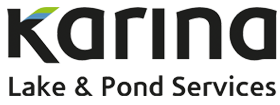With the unfortunate pollution and degradation that our lakes face today, it’s more critical than ever for us to take the right steps to clean and restore these precious water bodies. Thankfully, in recent years, there have been many promising lake cleaning technologies and techniques that help to remove contaminants and improve water quality. Let’s look at how these innovative solutions help to reduce excess nutrient levels, oxygenate water, and eliminate pollutants in our lakes.
Physical Lake Cleaning Techniques
Dredging for Sediment Removal
Dredging involves scooping out accumulated sediment from the lake bottom. Using specialized equipment like hydraulic dredges or mechanical excavators, we are able to remove layers of silt, sand, and organic matter.
Dredging also helps deepen lakes and remove nutrient-rich sediment that can fuel unwanted algae growth, thereby improving the nutrient balance in the water column. It also gets rid of contaminants that have settled on the lake floor over time.
Careful planning is needed to minimize ecosystem disruption during dredging operations. Most Governmental agencies have Dredging restrictions and permits are needed. Normally, we don’t recommend dredging for aesthetic reasons because it can cause volatile changes to the water chemistry, wildlife and give room for other invasive species to bloom. Dredging, it is meant to be a functionality solution for ponds with poor water quality and flow.
Aeration & Fountains for Water Oxygenation
Aeration systems pump air into the water to increase dissolved oxygen levels. This can be done through surface aerators that spray water into the air or bottom diffusers that release bubbles from the lake floor as well as fountains..
Increased oxygen supports aquatic life and helps break down organic matter. It can prevent fish kills and reduce the release of harmful substances from sediments in low-oxygen conditions.
Aeration also promotes water circulation, helping to distribute nutrients and prevent temperature stratification. This technique is particularly useful in deeper lakes or those prone to algal blooms.
Chemical Treatment Method
Algaecides to Control Algal Bloom and Excess Nutrients
Copper sulfate is the most common algaecide used to control algae growth in lakes. It’s applied by boat or from shorelines and disperses into the water to kill algae.
Peroxide-based algaecides are an alternative option that break down into oxygen and water, leaving no long term residues. These are often preferred for their lower environmental impact.
When it comes to algaecide effectiveness, dosage and timing are key. Treatments are usually applied in spring or early summer before the algal bloom peaks, and regular monitoring helps determine the best application schedule.
Biological Approaches
Bioaugmentation with Beneficial Bacteria
Bioaugmentation adds beneficial microorganisms to enhance the lake’s natural cleaning ability. Specific bacterial strains are selected to break down pollutants like excess nutrients or oil spills.
These bacteria are cultured in the lab and then added to the lake in large quantities. As they multiply, they consume harmful substances and turn them into harmless byproducts.
Some common bacteria used are Pseudomonas and Bacillus species. They are chosen for their ability to degrade organic matter and survive in different water conditions. Regular monitoring ensures the introduced bacteria are working without harming native species.
Phytoremediation With Plants
Phytoremediation uses aquatic plants to remove, degrade or stabilize contaminants in the water. These aquatic plants act as natural filters, absorbing high concentrations of nutrients and heavy metals as they grow.
Popular choices that we often use include water hyacinth, duckweed, and cattails. These plants have extensive root systems that trap pollutants and sediment.
We can also design floating islands or wetland areas where these plants can thrive. As the plants absorb contaminants, they are harvested and safely disposed of, removing pollutants from the lake ecosystem. As an added bonus, this method also provides habitat for wildlife and can enhance your lake’s appearance.
Ready to Restore the Health of Your Lake?
When it comes to lake cleaning and restoration, we have indeed seen significant advancements in recent years, which is great news for the rehabilitation and restoration of degraded aquatic ecosystems.
Ultimately, the success of lake cleaning efforts does depend on a combination of technological innovation. At Karina Lakefront, we know just how to leverage these promising technologies and techniques to ensure you get to enjoy a healthy lake. Call us today to learn about how we can help to restore and maintain your lake!
